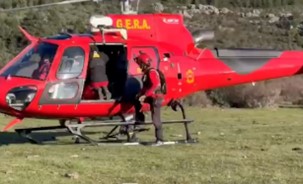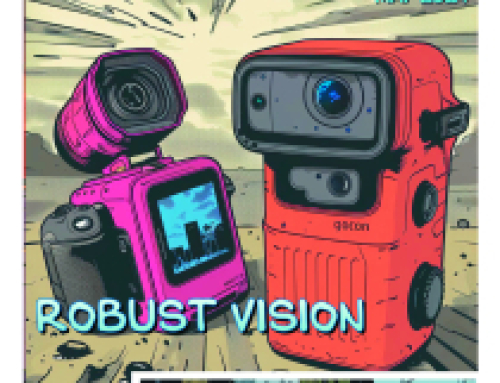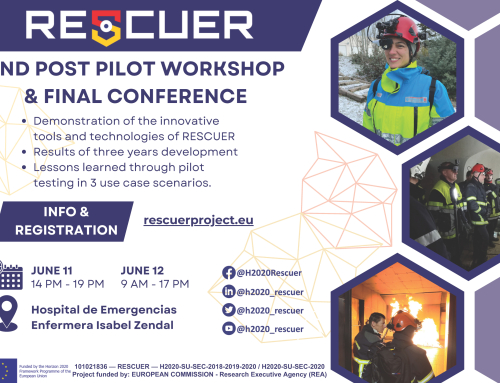The first pilot of the second round of the RESCUER project took place from the 4th to the 7th of March 2024, in Navacerrada, Spain. Set in a mountain search and rescue, it took place in and around the Navacerrada fire station, in the Barranca valley in the Sierra de Guadarrama, Madrid, Spain.


Forty-five people took a part in such activity, they were from 15 different partners’ organisations and 14 first responders from local entities such as UME (Spanish Military Emergency Unit), SUMMA 112 workers, and ERICAM (a Madrid Community USAR team). Also 6 relevant stakeholders from the government were present in the event.
The first and second days were dedicated to the integration of the different tools by the Technical Partners (TPs), who had to overcome the connection difficulties typical for mountain areas far from population centers. Partially important was also to determinate the areas where the tests of the tools and the pilot itself were going to be carried out.


The third day was dedicated to the training of the volunteers who participated in the different tests of the pilot, both statically and dynamically, carrying out different training sessions in which all the FRs were able to familiarize themselves with the tools and advance in their autonomy to use them.


FR were provided with an updated user manual with the improvements achieved after the last Modane pilot. Some functions of RESCUER system, some tools in particular were reviewed.
Pilot rehearsal and training was conducted in pairs of RFs and the rotation system was applied at different test stations. Due to technical challenges and also weather condition challenges the initially planned base for pilot testing was signposted.
Summary of immediate changes from the initial plan:
- Command center (C2) was located in the fire station garage,
- Augmented Hearing: The ability to communicate between the two FRs was tested while accelerating the fire truck located at that station,
- Augmented vision function at Smart helmet with use of IR camera was tested
in the indoor area simulating the cave. The search for victims was conducted without light and with a smoke generator (fog simulation). - Localization of victims was performed by Wireless Finder localizing a Smart phone in an area with bushes. Subsequently functionality of Signs of life detector was tested in an environment of mountain vegetation where was situated “a wooden shelter” simulating a real rockslide environment.
- Augmented vision function was tested by detection of hiking boots, skies, clothing and ski sticks distributed on a hillside.
Main representatives of Local authorities and SUMMA11 attended the event during training the part of distinguished visitors’ session. The members of project management introduced the main project objectives and the tools functionalities and possibilities to improve the quality and safety of first responders’ work.


On Tuesday and also on Wednesday, FRs tested the tools on the helicopter, in order to check the accuracy and ability to detect victims considering also different light conditions and different heights during the flight.

Technical partners analyzed the results of the integration days during the evening debriefs. The overall tools’ integration was recognized as the main systematic problem. Additionally, the constraints of using the technology in heavy raining condition for the next day’s tests was also discussed and assigned as the risk.
Ultimately, the initial idea of performing the tests at the La Barranca site, was abandoned. For those reasons the tests were carried out on the circuit of the fire station, with some modifications on it.
Therefore, SUMMA had to modify the evaluation of questionnaires which had been previously designed for online FRs’ completion.


The pilot was carried out on the route that had been designed with some modifications. The evaluation was performed by two evaluators following the FRs. They were obligated to fill up a checklist which should have set up the uniformity at each stage. The French FRs were accompanied by a French evaluator and the Spanish volunteers by a Spanish evaluator to improve understanding of the evaluation and record relevant feedback.

The last day was concluded by lessons identified session with the objective to suggest improvements for the forthcoming pilots to be introduced during General Assembly organized on 8th March 2024 at the promises of UPM in Madrid.







